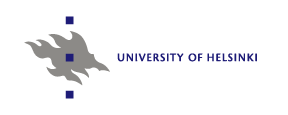- FIN-CLARIAH Research Infrastructure
A new national research infrastructure initiative FIN-CLARIAH for...
8.12.2021 8:12 by eahyvone - WarMemoirSampo published on December 3, 2021
A new “Sampo” application, “WarMemoirSampo”...
8.12.2021 8:04 by eahyvone - Five new SeCo papers accepted for the ISWC 2021
The 20th International Semantic Web Conference (ISWC 2021), the...
2.8.2021 6:53 by eahyvone
- Niks Kristofers Grislis, Kārlis Čerāns, Mikus Grasmanis, Heikki Rantala, and Eero Hyvönen: How to Add a User Interface on Top of an External SPARQL Endpoint: Case Nobel Prize Sampo
- Rafael Leal, Annastiina Ahola and Eero Hyvönen: Enriching Cultural Heritage Knowledge Graph Metadata from Finnish Texts with Large Language Models
- Michael Lewis, Eljas Oksanen, Frida Ehrnsten, Heikki Rantala, Jouni Tuominen and Eero Hyvönen: The Impact of Human Decision-making on the Research Value of Archaeological Data
- Eero Hyvönen, Petri Leskinen, Henna Poikkimäki, Heikki Rantala, Annastiina Ahola, Refael Leal, Jouni Tuominen, Senka Drobac, Ossi Koho, Ilona Pikkanen and Hanna-Leena Paloposki: LetterSampo Finland knowledge graph, data service, and semantic portal for researching epistolary data of the Grand Duchy of Finland (1809-1917)
History ontology (HISTO)
One of the main challenges in modelling in cultural domain is the historical aspect of the content.
Our aim is to offer
- a systematic and consistent way to model the structure of the history-oriented content
- a vocabulary with equivalencies between old and modern Finnish
- a systematic way to exploit History ontology in diverse modelling tasks
HISTO ontology is created as part of the FinnONTO project.
Contact Person
Historia-ontologia (HISTO)
Eräs keskeinen haaste kulttuurisisältöjen mallintamisessa on historiallinen ulottuvuus.
Historia-ontologia pyrkii tarjoamaan
- järjestelmällisen ja johdonmukaisen tavan historiallisen aineiston rakenteen mallintamiseen
- synonyymikäsitteistön, jonka avulla historialliset sanastoille saadaan nykyaikaiset vastineet
- johdonmukaisen tavan hyödyntää historiaontologiaa erilaisten aineistojen kuvailussa
Historiaontologian kehitystyö käynnistyi osana Suomalaiset semanttisen webin ontologiat -projektia ja jatkuu hankkeessa Linked Open Data Infrastructure for Digital Humanities in Finland (LODI4DH).
Lisätietoja
Publications
2012
Thea Lindquist, Eero Hyvönen, Juha Törnroos, Eetu Mäkelä: Leveraging linked data to enhance subject access - A case study of the University of Colorado Boulder s World War I collection online. World Library and Information Congress: 78th IFLA General Conference and Assembly, Helsinki, IFLA, http://conference.ifla.org/ifla78, August, 2012. bib link
Academic users often find work with online primary sources both rewarding and challenging. Improving subject access in these sources is essential as digital collections propagate and work with primary sources becomes increasingly important in humanities curricula. A user needs assessment was conducted with humanities users at the University of Colorado Boulder to facilitate engagement with these sources. Two of the major user needs identified were improving findability and context, particularly for historical subjects. Linked Data can help meet these needs by linking related concepts in the sources using a specialized vocabulary, enriching them with outside resources, and enabling semantically rich services that empower users. This paper discusses a project the authors undertook to enhance subject access in CU’s WWI Collection Online by deep linking historical data on the civilian experience in occupied Belgium. This work is intended to lead to a richer understanding of forces shaping the WWI period.
Eero Hyvönen, Thea Lindquist, Juha Törnroos and Eetu Mäkelä: History on the Semantic Web as Linked Data - An Event Gazetteer and Timeline for World War I. Proceedings of CIDOC 2012 - Enriching Cultural Heritage, Helsinki, Finland, CIDOC, http://www.cidoc2012.fi/en/cidoc2012/programme, June, 2012. bib pdf
Events are an essential component of cultural heritage (CH) Linked Data (LD): they link actors, places, times, objects, and other events into larger narrative structures, providing a rich basis for semantic searching, recommending, analysis, and visualization of CH data. This paper argues that shared vocabularies (gazetteers, ontologies) of events, such as the “Battle of Normandy” or “Crucifixion of Jesus”, are necessary to facilitate the aggregation and linking of heterogeneous content from various collections. For example, biographies, histories, photos, and paintings often reference or depict events. A set of general requirements for an event gazetteer is presented, based on the needs of publishing, aggregating, and reusing cultural heritage content as Linked Data. After this, a metadata model addressing the presented requirements for representing historical events is outlined. The model is being applied in a case study aimed at developing an event ontology for World War I (WWI). Our goals from an end-user perspective are twofold: 1) Facilitate event-based cataloging for curators in memory organizations; 2) Utilize semantic event descriptions and narrative event structures in end-user applications for searching and linking documents and other content about WWI, and for structuring and visualizing them.
Eero Hyvönen: Museoalan ontologiat Suomessa. Kansallisen FinnONTO-hankkeen tulosten hyödyntäminen (Cultural Heritage Ontologies in Finland. Utilizing the results of the FinnONTO project.). (in Finnish), Aalto University, Department of Media Technology, 4, 2012. bib pdf
2007
Eero Hyvönen, Olli Alm and Heini Kuittinen: Using an Ontology of Historical Events in Semantic Portals for Cultural Heritage. Proceedings of the Cultural Heritage on the Semantic Web Workshop at the 6th International Semantic Web Conference (ISWC 2007), Busan, Korea, November 12, 2007. bib pdf
We argue that an ontology of historical events is needed in semantic portals for cultural heritage due to three reasons. First, ontological identifiers (URIs) of events, such as the World War II or coronation of Napoleon, are needed in order to make collection metadata mutually interoperable in terms of related events---in the vein as identifiers are needed for identifying artifact types, persons, and geolocations when annotating collection items. Second, events are of central importance in creating semantic links between cultural contents in applications such as recommendation systems. Third, historical events are important as content items of their own, forming the backbone of chronological histories.


